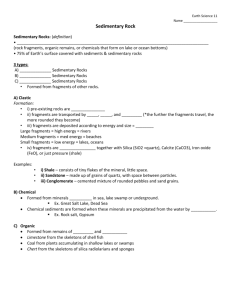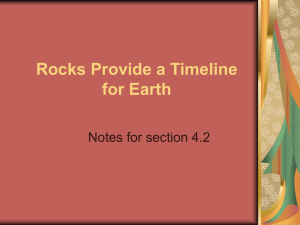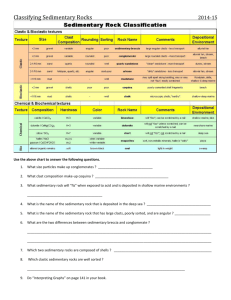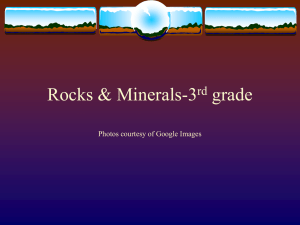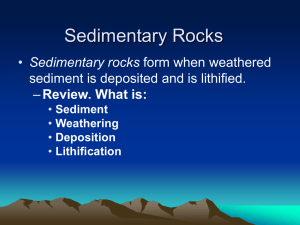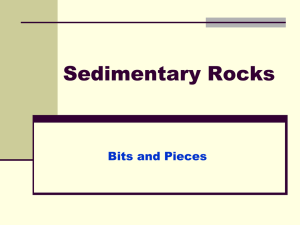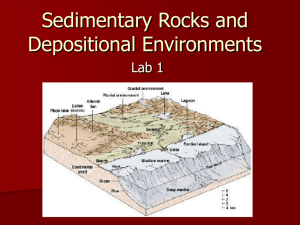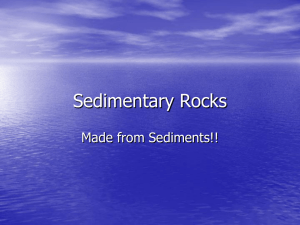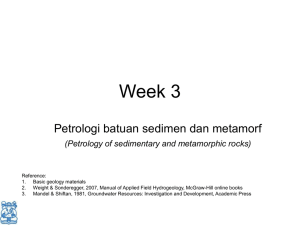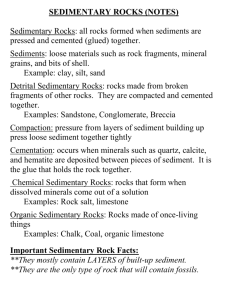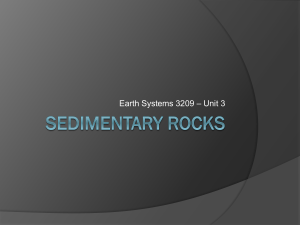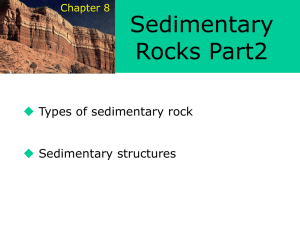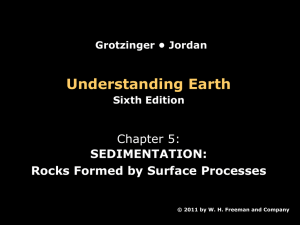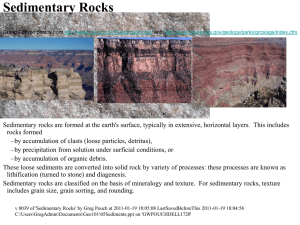Sedimentary Rocks
advertisement
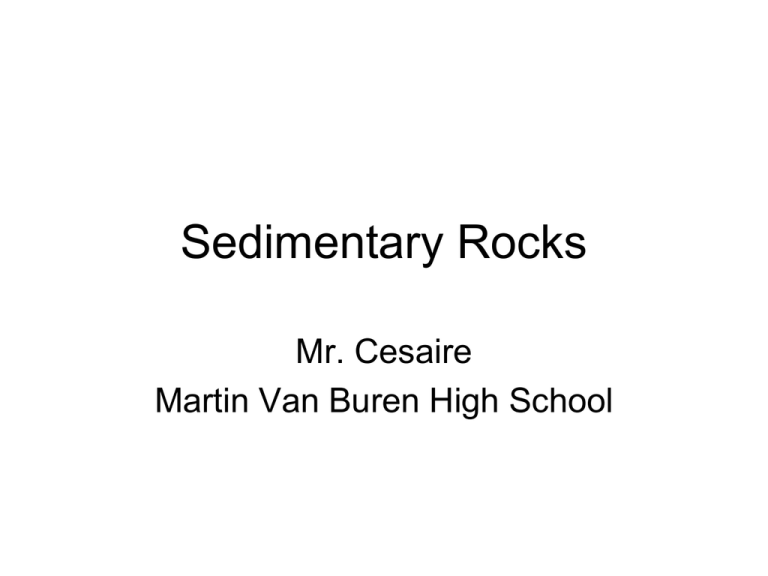
Sedimentary Rocks Mr. Cesaire Martin Van Buren High School • Aim: What are the processes that form sedimentary Rocks? • Do now: Take the blue/orange text from the back and define the following: Sedimentary Rocks, Clastic Rocks • Test next Friday on minerals, igneous rocks, sedimentary rocks. STUDY, STUDY, STUDY! • HW # 4: Read pages 59 to 62 Answer questions 1-8 Due. • www.myspace.com/mrcesaire - blog, info, etc, updated, Bill Nye the Science Guy Videos on Rocks. • www.tinyurl.com/8msdk updated, Bill Nye Science Guy Videos on Rocks Sedimentary Rocks • Who can describe sedimentary rocks? • Sediments are solid fragments (pieces) of materials that have been transported then deposited. • Transport and deposition by air, water, or ice. • Fragments from rocks, fossils, and animals. • http://www.sci.ccny.cuny.edu/~mcesaire/ es0604_sediment_deposit.swf <~~(click here) • Sedimentary rocks form by three methods: • 1. Combination of fragments. • 2. Evaporation and precipitation • 3. Biologically Sedimentary Rocks are categorized by sediment size. Pebbles, cobbles, boulders (large grains)~~~>> Conglomerate Sedimentary Rocks are categorized by sediment size. Sand has a grain size of 0.2 to 0.006 cm ~~~>> Sandstone Sedimentary Rocks are categorized by sediment size. Clay has a grain size of less than 0.0004 cm ~~~>> Shale Sedimentary Rock Formation • Sediments go through a process of Lithification • Lithification-conversion of loose sediments into solid rock. • 1.Cementation-binding together of sediment with clay. • 2. Compaction- sediments “squeezed” together by water and or sediment pressure. • 3. Desiccation-drying out or drying up of water. • In your text, starting on page 127 write down the answer of the following in your notes. • Clastic – – – – – 1. Describe clastic or clastic sedimentary rocks. 2. How are they typically formed? 3. Describe the various size of fragments. 4. How are these fragments collected and moved? 5. Discuss the process of cementation. • Chemical – 1. Where can you find dissolved minerals? – 2. Describe the process of precipitation and evaporation. Name some examples. • Organic – 1. How do organic sedimentary rocks form? – 2. What are some examples? – 3. Name the mineral typically found in limestone Sedimentary Rock Formation • Sedimentary rocks tend to form horizontal layers. • Also known as strata or beds. Sedimentary Layers of the shore of Lake Champlain http://academics.smcvt.edu/vtgeographic/textbook/geolog y/Sedimentary_layers.jpg http://comp.uark.edu/~sboss/seds02.jpg http://curriculum.calstatela.edu/courses/builders/lessons/less/les2/gifs220/sedgifs/layers38044.jpg Breccia Coal Limestone Shale Siltstone


